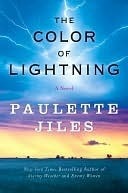What do you think?
Rate this book


369 pages, ebook
First published January 1, 2009
"She was afraid of the slow death of confinement. Of being trapped inside immovable houses and stiff clothing. Of the sky shuttered away from her sight, herself hidden from the operatic excitement of the constant wind and the high spirits that came when they struck out like cheerful vagabonds across the wide earth with all of life in front of them and unfolding and perpetually new. And now herself shut in a wooden cave. She could not go out at dawn alone and sing, she would not be seen and known by the rising sun." (pg. 222)This is what I love about book swaps. I never would have read this book otherwise!
THE MEN WHO decided the fate of the Red Indians lived in the east, under roofs of slate and shingle. There were windows paned with large sheets of glass that looked out comfortably on a dense and busy world. The roofs lined up in slanting layers of coal smoke on each side of narrow streets and these streets were full of hurrying people and vehicles at all hours.This book, at its core, is about the clash of cultures. As Europeans migrated across the Atlantic, they brought their culture with them. There were already people here with a different culture. There were always going to be problems. The clash in this novel takes place in the central part of the US just after the Civil War. And so there was also a changing in the "white man's" culture because now there was also the freedom of the slaves.
And later ...
Tall white-bodied sycamores whipped toward the southeast and their new leaves streamed like sequins into the wind. Lightning forked out of the clouds and in its brief catastrophic flash he saw the tree trunks become incandescent. The heaps of crumbling flood debris and jittering small leaves of the chokecherry lit up as if with pale fire.